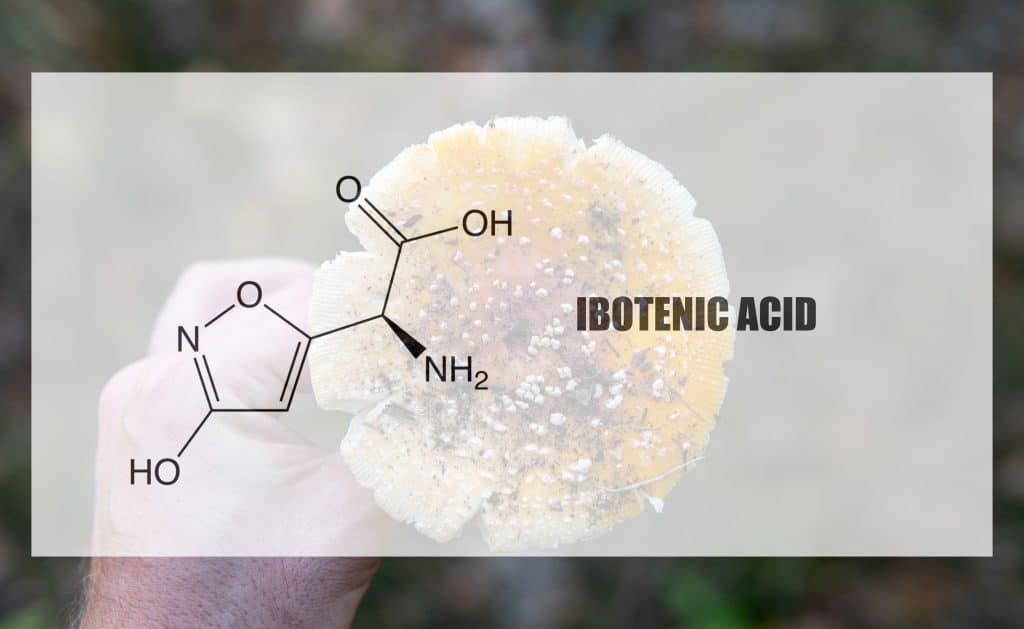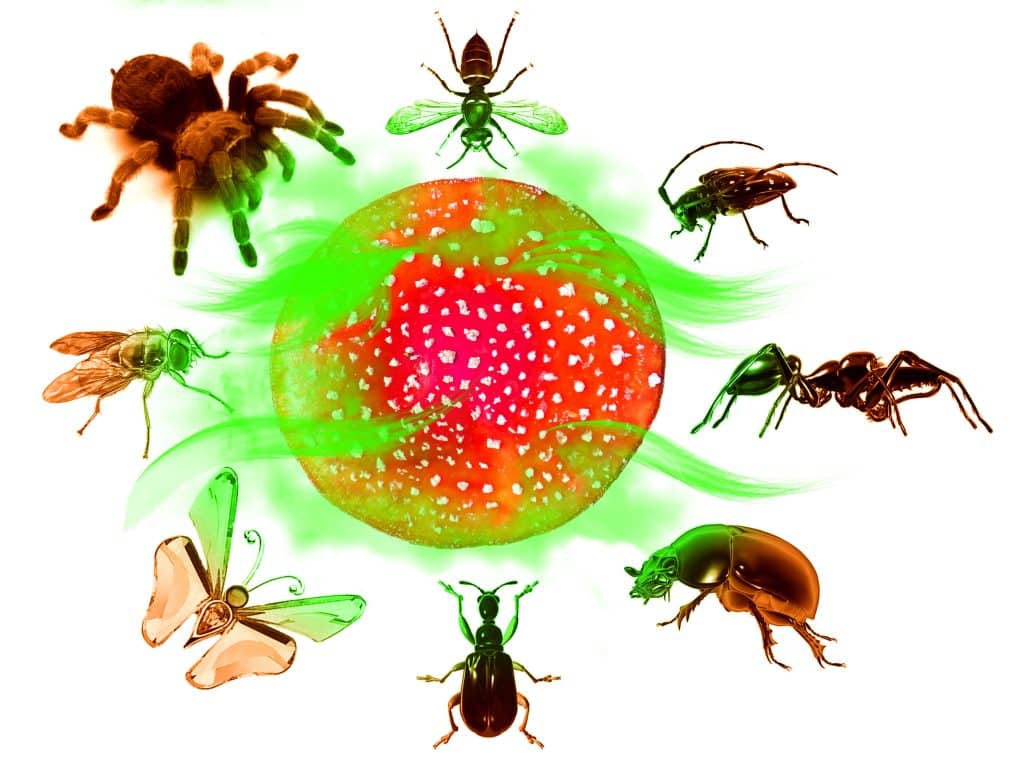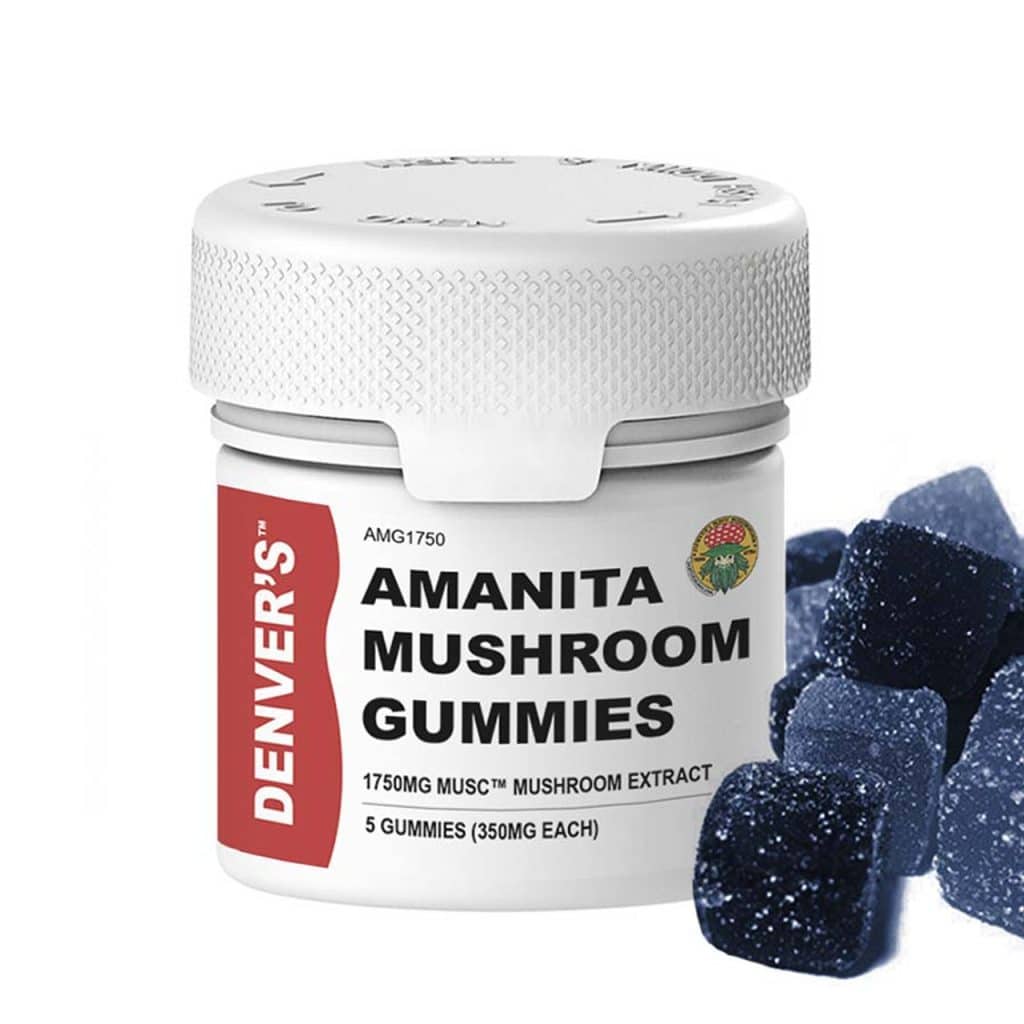We’ve been talking a lot about fly agaric mushrooms, aka Amanita muscaria. In fact, the latter name is its official name, and the former is a second name given to it because of one of its many benefits. Fly agaric is a natural insecticide that’s been used to kill flies for centuries, if not thousands of years. And you can still use it this way today, if you’re not too busy getting high.
What are fly agaric mushrooms?
The term ‘fly agaric’ is a nickname that we’ll get to soon. In terms of official taxonomy, we’re talking about Amanita muscaria, a species of poisonous fungi, which is sometimes confused for a psychedelic mushroom. While they are both hallucinogens, unlike psychedelic mushrooms, Amanita mushrooms have a different mode of action that centers on the neurotransmitter GABA, rather than serotonin. This is done with a compound called muscimol, instead of psilocybin. This is obviously a simplified differentiator, but it does speak to the wildly different experiences offered.
Unlike magic mushrooms (aka psilocybin mushrooms, psychedelic mushrooms), Amanita mushrooms are legal in the US. This is likely due to their relative non-existence in the country until much more recently. When the flurry of illegalization laws were put in place in the latter half of the 1900’s, Amanita mushrooms simply weren’t there to be considered. They’re native to much colder places like Siberia and Northern Europe, but can now be found in some of the colder areas of the US.
These fungi are some of the most recognizable on the earth with red caps that have white spots on them. Their image is the image most often associated with the term ‘magic mushrooms’ even though that term technically applies to the psilocybin variety. The image was popularized decades ago by the video game Super Mario Brothers, and though most people don’t know the name, most are familiar with how they look.
Thanks for dropping in. For direct email updates, subscribe to the Cannadelics Weekly Newsletter, which also comes full of deals on products like cannabis flowers, vapes, edibles, smoking devices, cannabinoid compounds, and a wide selection more. Celebrate life: get yourself stoned responsibly!
The main compound of interest in Amanita mushrooms, is muscimol. It’s the compound most associated with the delirium, relaxation, and euphoria of the drug. It’s this compound that attaches to GABA receptors in the brain. One of the other major compounds, ibotenic acid, is what gives these mushrooms the classification of poisonous. Though they aren’t any more poisonous than psilocybin mushrooms – i.e. – capable of causing a bad time under the wrong circumstances, they’re not actually associated with killing people.
As long as the mushrooms are prepared properly, getting sick from the ibotenic acid shouldn’t be a problem. Ibotenic acid decarboxylates into muscimol, meaning it is useful to have a mushroom with a high ibotenic acid content. But the important thing is to decarboxylate it, by either drying it extensively, or making it into a tea. Historically, besides the tea, tribes in Siberia were rumored to drink the urine of reindeer who had eaten the mushrooms, as the ibotenic acid would have decarboxylated in their bodies, leaving an unchanged muscimol in the urine.
While deaths aren’t generally associated with these mushrooms, there is one story of note, although there is no firm confirmation. Back in 1897, it was reported that Italian diplomat Count Achilles de Vecchj died in Washington, DC after eating several platefuls of these mushrooms, bought from a vendor in a local market. Though the United States Department of Agriculture did an investigation after the fact, the ability to know for sure if the guy consumed an aberrant and unexpected mushroom, is impossible to know.
Back then it was commonplace for vendors to collect mushrooms from the wild, with nothing beyond personal knowledge to keep anything from getting confused. As mushrooms often look similar, and can be very dangerous, the idea that an actually poisonous one got in the batch, isn’t terribly far off. Maybe he did die from Amanita muscaria, maybe something similar. What we do know, is that these mushrooms aren’t associated with killing humans. But they are associated with killing little pests.
Fly agaric – the natural insecticide
This species of fungi is known officially as Amanita muscaria. So what is this other name that always gets mentioned, fly agaric? And where does it originate? While this second name is not the name found in botany books, it came into existence based on a specific use of the plant from many years ago.
Fly agaric mushrooms function as a natural insecticide, and the name comes from this. This was a practice in Siberia and some European countries. The caps of the mushrooms were taken, crushed up, and put in plates of milk. This combination attracts house flies, that come to drink up, and then die from the ibotenic acid poisoning. It might not be enough to kill humans, but as a plant defense against insects, its certainly enough to act as a fly catcher.

The ibotenic acid is water soluble, as is muscimol. When making a tea, both compounds are leached out into hot water, and in the process, the ibotenic acid decarboxylates to muscimol. In the case of the milk, no decarboxylation is necessary, and both compounds simply leach out into the water, creating a poison to the flies. Just like with humans, they become intoxicated and drowsy, and eventually die.
In a study into these uses called Catching flies with Amanita muscaria: traditional recipes from Slovenia and their efficacy in the extraction of ibotenic acid, nine separate methods of insect-killing were mentioned. The simpler methods comprised easier formulations, like what’s mentioned above. Sometimes done with water, and sometimes just by dripping milk on the mushroom. The more advanced versions include a soak in milk or water as well, coupled with the use of heat or some kind of mechanical processing.
In this study from 2017, Pesticidal Activity of Wild Mushroom Amanita muscaria (L) Extracts against Sitophilus zeamais (Motschulsky) (Coleoptera: Curculionidae) in Stored Maize Grains, it was shown that 96.7% of Sitophilus zeamais (weevils) were repelled after 24 hours of exposure to the methanol extract of Amanita muscaria mushrooms in samples of stored maize grains. At a concentration of 0.5% w/w, the extract still had high toxicity after 21 days, killing 61.7% of pests.
This idea of a relationship with flies is seen in both the official name, and the colloquial name. In terms of the official name, ‘muscaria’ is from the word ‘musca’ in Latin, meaning ‘fly.’ On the other hand, the nickname ‘fly agaric’ is comprised of the obvious ‘fly’ coupled with ‘agaric’, which refers to the fruiting body of a fungus, meaning it translates to something like ‘fly mushroom.’
There is, however, controversy over just how effective this method is. Some sources say that the mushrooms merely intoxicate the flies; but realistically, this would mean death for many, or at least slowing them down and getting them out of the way. It also backs up why some of the above methods involve using heat and processing to make a stronger killing solution.
To add to the controversy, some say the names don’t refer to killing flies, but to the hallucinogenic/mental state the mushrooms induce, something attached to the idea of flies. Flies have represented craziness in some cultures, possibly for their ability to be both incredibly irritating, and hard to kill; making them represent a sort of mental madness. This theory could be true, but does nothing to undo that there are reports of them used as insecticide, as well as the recent study that confirms this ability.

As nearly every plant has constituents meant to kill parasites of different kinds (including bugs), and as it has been shown to cause this poisoning in flies, (accompanied by plenty of historical ‘rumors’ or stories), I think it suffices to say it’s a workable method.
The study of bug repelling methods above did not make mention of current uses. So its hard to know if these back-in-the day approaches to fly-killing are still a norm in any areas, or simply a way of the past, which has been updated by more chemical methods. For those who like the idea of natural pest control, and have access to these mushrooms, maybe give it a shot. After all, it’s not going to kill you, and you can get rid of pests without a bunch of harsh chemicals.
NEW: Amanita Muscaria Magic Mushroom Gummies
Just in time for 2023 the Amarita Muscaria mushroom, the first-ever legal psychedelic mushroom id offered online with a great product: Legal Magic Mushroom Gummies. These legal psychedelic gummies works differently from the ones we all know, so embrace yourself for a whole new experience!
This exciting new product contains completely legal magic mushroom extract, not from psilocybin mushrooms, but from Amanita muscaria, also known as Fly Agarics. Each gummy contains 350 mg of Amanita extract, perfect for a balanced and well-rounded high. These gummies are legal in every state except Louisiana.
As this is a new product, you should start low and grow slow, to find your own recommended dosage.

TIP: Use NEWCUSTOMER coupon code for $5 off your first order.
Stock Up on Amanita Muscaria Magic Mushroom Gummies
(With NEWCUSTOMER coupon code)
Want to source Amanita gummies for your shop?
Use code WHOLESALENEW and shave $100 off your first order over $1000.
Click HERE to open a wholesale account
Conclusion
It’s a great shame we’re so quick to eschew old school, cleaner methods, for the more modernized chemical solutions of today. Fly agaric mushrooms as a natural insecticide represent a different way of going about things. And just because its old school, doesn’t mean it can’t be used today… Although to be fair, there are plenty of other plants to help with this, that won’t also make you sick should you happen to ingest them without the proper prep work first.
Welcome readers! Thanks for making your way to Cannadelics.com; a platform designed to bring you the best in independent news reporting for the cannabis and psychedelics spaces. Come by frequently to stay aware of important happenings, and sign up for the Cannadelics Weekly Newsletter, so you’re always up on what’s going down.
The post <strong>Fly Agaric: The Natural Insecticide</strong> appeared first on Cannadelics.
Via https://cannadelics.com/2023/01/08/fly-agaric-the-natural-insecticide/
source https://rosalinaklerkx.weebly.com/blog/fly-agaric-the-natural-insecticide

No comments:
Post a Comment